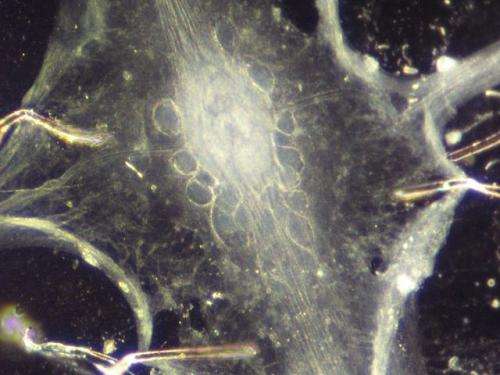Nerve cells can work in different ways with same result

(Medical Xpress)—Epilepsy, irregular heartbeats and other conditions caused by malfunctions in the body's nerve cells, also known as neurons, can be difficult to treat. The problem is that one medicine may help some patients but not others. Doctors' ability to predict which drugs will work with individual patients may be influenced by recent University of Missouri research that found seemingly identical neurons can behave the same even though they are built differently under the surface.
"To paraphrase Leo Tolstoy, 'every unhappy nervous system is unhappy in its own way,' especially for individuals with epilepsy and other diseases," said David Schulz, associate professor of biological sciences in MU's College of Arts and Science. "Our study suggests that each patient's neurons may be altered in different ways, although the resulting disease is the same. This could be a major reason why doctors have difficulty predicting which medicines will be effective with specific individuals. The same problem could affect treatment of heart arrhythmia, depression and many other neurological conditions."
It turns out, even happy neurons may be happy in their own way. Neurons have a natural electric activity that they are biologically programmed to maintain. If a neuron isn't in that preferred state, the cell tries to restore it. However, contrary to some previous beliefs about neuron functioning, Schulz's research found that two essentially identical neurons can reach the same preferred electrical activity in different ways.
In Schulz's study, individual neurons used different combinations of cellular pores, known as ion channels, to achieve the same end goal of their preferred electrical and chemical balances. Schulz compared the situation to five people in separate rooms being given sets of blocks and told to construct a tower. Each person could devise a different method for constructing the same structure.
Schulz's finding could inform doctor's treatment of epilepsy. In epileptics, the neurons of the brain frequently receive too little stimulation from other neurons. Those under-stimulated epileptic neurons may overcompensate and become too sensitive. Then, when any impulses actually do reach them from other neurons, those hyper-sensitive epileptic neurons may over-react and cause a seizure.
Schulz worked with Satish Nair, professor of electrical and computer engineering in MU's College of Engineering. The collaboration allowed their team to model nerve cell behavior in computer simulations in addition to his physical experiments using crab nervous systems.
More information: The study, "Neurons with the same network independently achieve conserved output by differentially balancing variable conductance magnitudes," was published in the Journal of Neuroscience.
















